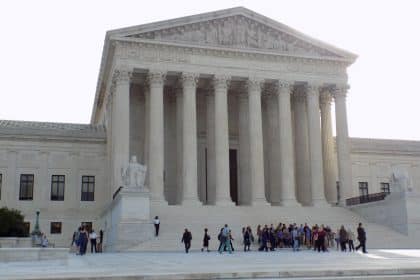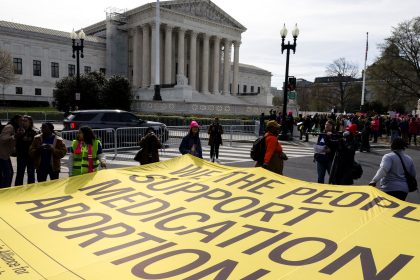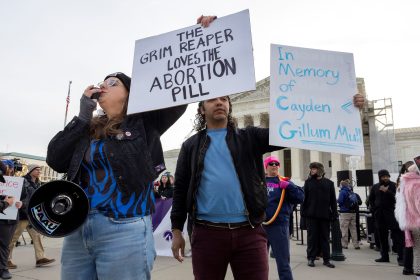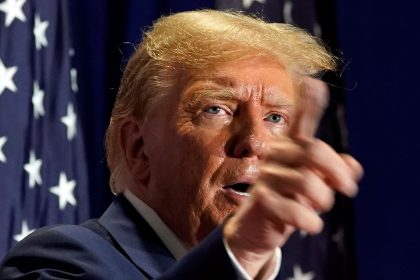The Looming Supreme Court Confirmation Battle, Explained
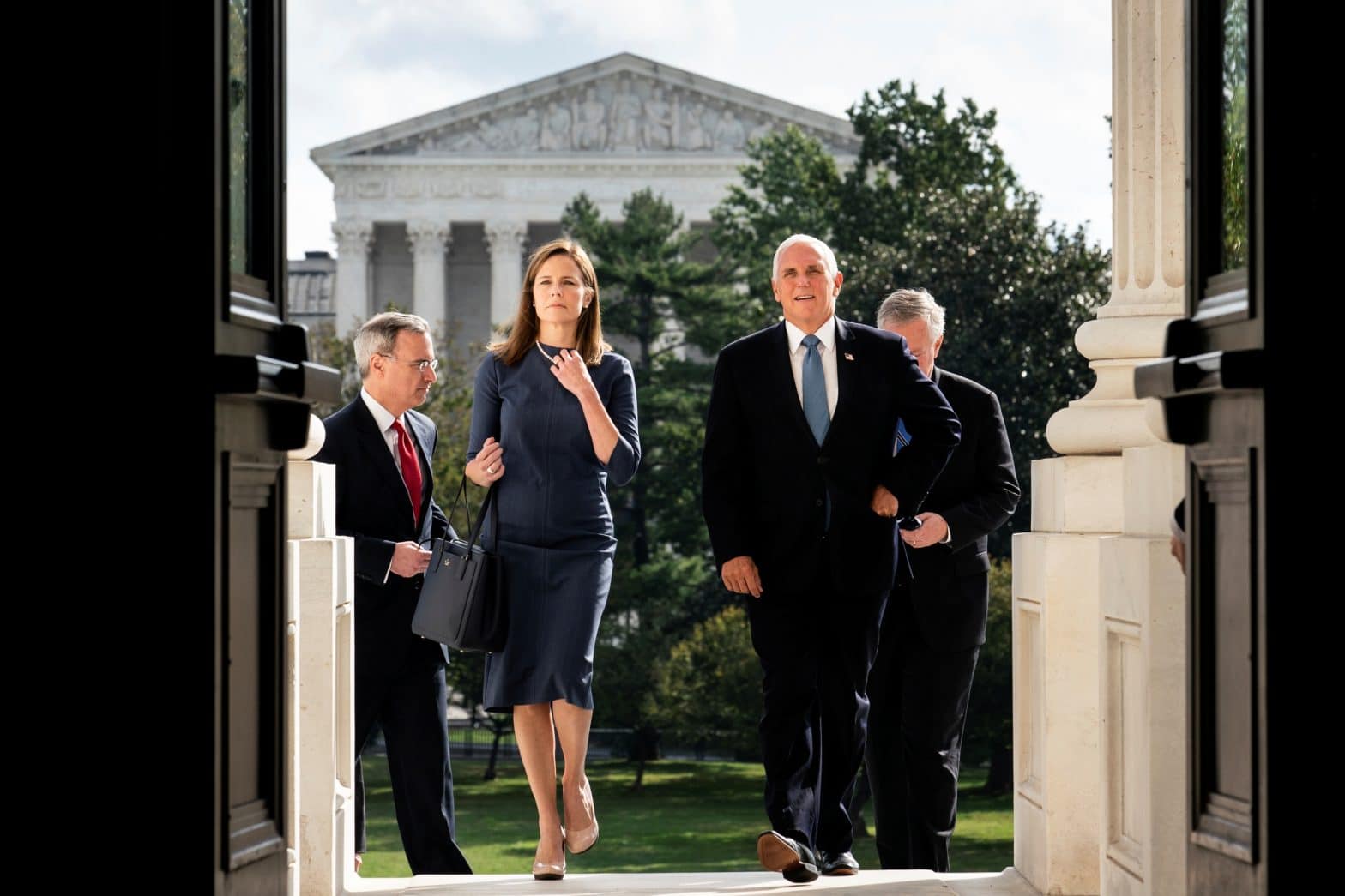
WASHINGTON – “What you’re about to witness will be a kind of a Kabuki theatre,” Ron Bonjean said the other day.
The communications Sherpa during Justice Neil Gorsuch’s confirmation to the U.S. Supreme Court, he was reflecting on that experience as he described what could be the next several weeks of Judge Amy Coney Barrett’s life.
Bonjean, a Republican partner at the bipartisan firm Rokk Solutions, had never met Gorsuch before the night of Jan. 31, 2017, when President Donald Trump formally nominated the jurist in the East Room of the White House.
About all Bonjean knew as dignitaries gathered for cocktails in a side room after the announcement, were the bullet points of Gorsuch’s resume and enough about his rulings on the 10th U.S. Circuit Court of Appeals to be able to define his judicial philosophy.
“As a member of the confirmation team, working on behalf of the White House my job was to help prepare the nominee for the Senate Judiciary Committee hearing, and to deal with all the media,” Bonjean said.
“Part of the job is simply to make sure the nominee is being treated fairly,” he said. “At the same time, you’re constantly trying to highlight their positive characteristics — that this is a brilliant person, that they are well qualified for the job and that they’ll be an independent judge on the bench.”
Judge Amy Coney Barrett stepped into the vortex of being a Supreme Court nominee on Saturday, Sept. 19, the day after Justice Ruth Bader Ginsburg died, creating the court vacancy.
As recounted in a 70-page questionnaire the White House submitted to the Senate this week, Trump offered Barrett the job on Monday, Sept. 21, “and I accepted,” she wrote.
The nomination of Barrett, a one-time clerk for the late Justice Antonin Scalia drew immediate praise from Republican Senators, but strong opposition from Democrats who object to both her conservative views and the Republican’s intention to confirm her before the Nov. 3 election.
This is the first time in U.S. history a nominee will be voted on so close to a presidential election, with early voting already underway in half the states.
Though Bonjean isn’t working on Barrett’s confirmation, he said the process of moving her through it is likely not dissimilar to what he experienced with Gorsuch.
“In general, the White House puts together a team for confirmation, with the White House Chief of Staff working in collaboration with the White House General Counsel’s Office and the Office of Legislative Affairs,” he said.
“These offices designate the members of the team, and they also then decide whether or not they need a Sherpa to guide the nominee through the process,” Bonjean continued. “Now, you have to remember, Gorsuch was nominated just 11 days after Trump took office. So their bench was spread rather thin.”
While Bonjean was named the legislative Sherpa, then-Sen. Kelly Ayotte, of New Hampshire, became the legislative Sherpa, acting as the go-between with Senate Republicans.
For the Brett Kavanaugh confirmation hearings, by comparison, the White House relied on its own communications team, while asking former Sen. Jon Kyl, of Arizona — a former employer of Bonjean — to serve as the legislative Sherpa.
In Amy Coney Barrett’s case, there is none.
When the federal appeals court judge arrived for her courtesy calls at the Senate last week, she was accompanied by Vice President Mike Pence, White House counsel Pat Cipollone, Pence’s chief of staff, Marc Short, and White House Chief of Staff Mark Meadows — a sign of the administration’s strong commitment to getting a third justice confirmed during Trump’s first term.
“You Can’t Handle the Truth”
Of course, the White House isn’t the only entity working to ensure a Supreme Court nominee is confirmed.
A number of other groups also weigh in. One of the most prominent advocates for conservative judges is the Article3Project, which relies on earned media, paid media, press releases, and digital ads to support the nomination.
“It’s important to provide as much support for the nominee, and as much support for the president as you can,” said Ian Prior, a spokesman for the Article3Project. “And to make sure that the people attacking the nomination and attacking the nominee are held accountable.”
Though this outside help can sometime be controversial, mainly because most of the entities are 501(c)(4)s, and therefore exempt from disclosing their donors, their goal is really no different from that of the White House — getting the message out.
“The outside groups play a different role,” Bonjean said. “On the one hand, they are engaged in advertising and take a much more aggressive approach to defending the nominee and doing counter attacks against those who are trying to stop the nomination.
“Our job is to prepare the nominee for the confirmation hearing itself, and of course deal with the media that’s covering everything,” he said.
The confirmation process for the eight current justices on the Supreme Court took, on average, 78 days. But President Trump has controversially said he wants Barrett confirmed by Election Day, Nov. 3, in case the high court needs to weigh in on the outcome of the election.
That means the Republicans will have to shrink the timeline to get a vote by the full chamber done on time.
Senate Judiciary Chairman Lindsey Graham of South Carolina said Friday that President Trump is “very focused” on Barrett’s confirmation despite the revelation that he and the first lady have both tested positive on the coronavirus.
Graham said the hearing before his committee will last “three or four days,” following the format the committee followed for other Supreme Court nominees.
Opening statements by Judiciary Committee members and the nominee are expected to occur on Monday, Oct. 12 followed by the questioning of Barrett on Tuesday, Oct. 13. Testimony by those who are most familiar with Judge Barrett as well as legal experts is expected to follow.
The Constitution provides little guidance on the process the Senate should follow to confirm a new justice.
Under Article II, Section 2, clause 2, otherwise known as the “appointments clause,” the president “shall nominate, and by and with the Advice and Consent of the Senate, shall appoint … Judges of the supreme Court.”
It’s up to the Senate to decide what “Advice and Consent” means in practice.
Under the current rules, the Senate Judiciary Committee first considers and investigates the president’s nominee before deciding whether to refer the nominee to the full Senate for a vote.
The committee’s consideration process boils down into three parts: a background investigation; the public hearing; and a vote to advance the nomination to the Senate floor.
What will play out in the committee chamber, “is all well coordinated,” BonJean said. “The Democrats are coordinating their opening statements and questions to try to reveal weaknesses in the nominee, and the Republicans will be coordinating their opening statements and questions in order to provide a strong defense for the judge and a counter offense.
“It’s almost like a scripted play, honestly … this is where it becomes the Kabuki theater I was talking about, simplistic, but Kabuki theater all the same,” BonJean said.
Senate Majority Leader Mitch McConnell, R-Ky., has repeatedly stated that the Senate will vote on Barrett’s nomination as soon as possible, though he has been vague on whether it will occur before or after the election.
Most observers, Bonjean included, believe if McConnell knows he has the votes, she’ll be voted on before Election Day.
Democrats, including former President Barack Obama, are calling on Republicans to follow the precedent they set in 2016 when McConnell refused to allow an election-year vote on Judge Merrick Garland, Obama’s pick to replace Antonin Scalia, after the justice died in February 2016.
Bonjean said in his view the polarization of the Supreme Court confirmation process is the byproduct of the polarization of America.
“In a sense, it’s just another victim of a situation where we have a very large Republican base and a very large Democratic base, and very little room in the middle,” he said.
The result is that the confirmation process is now a political campaign, “where one side is trying to get a justice confirmed and the other is trying to defeat that person,” Bonjean continued. “It’s just completely politically polarized.
“Even before Barrett was nominated, when she was merely a finalist for the nomination, the Democrats were trying to paint her as a biased judge on issues ranging from health care to abortion,” he said, adding, “Her job during her confirmation hearing will be to show that she’s an independent person who will uphold the law.”
Bonjean said Democrats will be aggressive in their questioning, trying to pry Barrett away from what he expects will be “mostly neutral answers.”
“We all know how this works,” he said. “They’ll come after her and she’ll say she’ll uphold the law and that commenting on issues and cases that might potentially come before her in the future would be inappropriate.”
“Most of the time, she’s just going to have to be straight-laced and neutral and show that she’s a very qualified nominee while being very boring,” he said. “I mean, a lot of this is about not letting the Democrats get under her skin, and maintaining her class.
“What you don’t want in any way, shape or form is a scene like the one in “A Few Good Men,” when Jack Nicholson starts yelling “You can’t handle the truth.”
Democrats Politely Decline
Barrett recently spent two days on Capitol Hill meeting with Republican Senators on the Judiciary Committee while almost all of the Democratic Senators on the panel declined meetings.
Bonjean said that was not necessarily a bad thing for the judge.
“These meetings are really controlled by the legislative affairs members of the confirmation team, but there is a media aspect to this — particularly for the Senators,” he said.
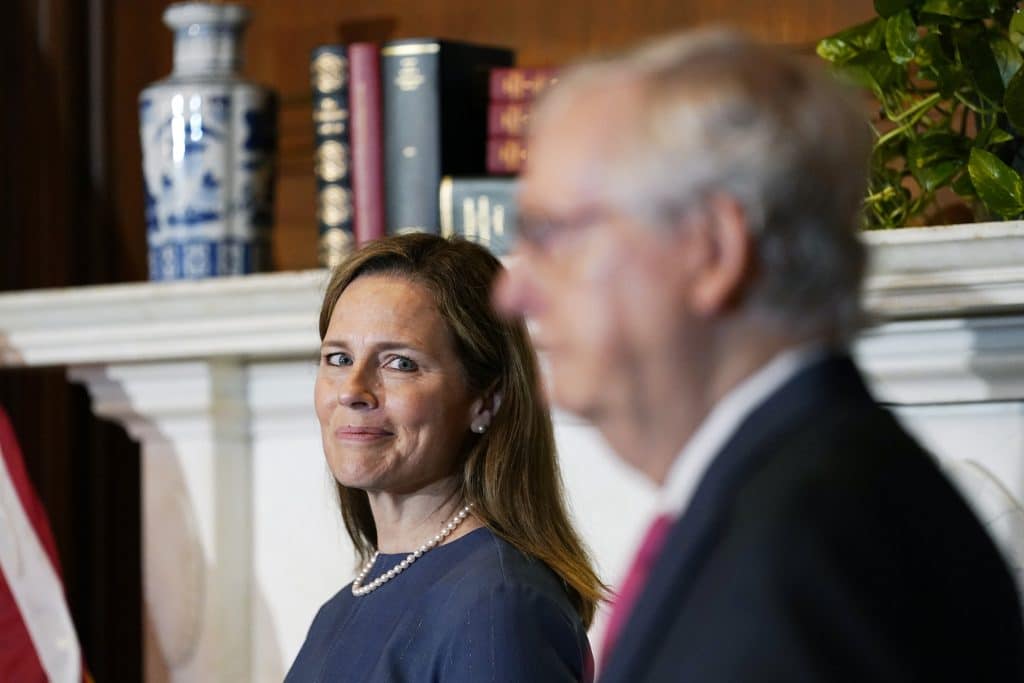
“Basically, you have these closed door meetings, which are very repetitive, with a lot of the same questions asked … and then you get a media availability, which is really designed to get the member press back in their state. You know, they’re a big player because they met with the Supreme Court nominee.”
“But if you’re the nominee, you have to say yes to every request for a meeting,” he said.
In 2009, nominee Sonia Sotomayor met with a third of the senate during her confirmation process — seeing most of them after she broke her ankle in an early morning airport stumble while boarding a flight from New York to Washington.
Bonjean said the upside of Democrats refusing to meet with Barrett is that likely gave her more time to prepare for the committee hearing.
“I mean, this hearing is happening in record time,” he said. “Normally a nominee has six or seven weeks to prepare. And the preparation is really not over the case law — an individual nominated to the Supreme Court knows that — it is more about preparing to enter the political arena and how to deal with the minefields and things like that.”
Republicans See Fast-Track Through Background Check
Typically nominees get six weeks to prepare for their hearings, because that’s how long it takes for the background investigation to get done.
During the investigation, the committee makes requests for information, including financial disclosures from the nominee as well as a detailed biographical and professional history.
Individual senators also often meet in person with the nominee during the investigative phase.
Republicans have said this process can be fast-tracked for Barrett, since she just went through a background check in 2017 before her appointment to the 7th U.S. Circuit Court of Appeals.
After the committee reviews the nominee’s materials, senators can request written follow-up information from the nominee before the hearing begins.
The hearing itself involved multiple rounds of questions from the 12 Republican and 10 Democratic senators on the committee, usually lasting just one day.
When all is said and done and every witness questioned, the committee will vote on whether to send the nomination to the full Senate.
“What will be interesting this time is what Sen. Kamala Harris has to say,” Bonjean said. “I mean, she’s the vice presidential nominee, and right now, she’s scheduled to be one of the last, if not the last person to speak because she’s the most junior member on the committee.”
“I know there’s an effort right now to get other Democrats on the committee to give up a portion of their time to allow her to speak quickly, but that’s one person I’d watch.
“Aside from that, I expect the Democrats to question Barrett’s stance on several issues. One is abortion. Two is health care. Three is what she will do if there’s not a clear winner in the 2020 election,” he said.
Thanks Harry
During the week between Justice Ginsburg’s death and Barrett’s formal nomination in the White House Rose Garden, several Republicans, including President Trump, “thanked” former Democratic Senate Majority Leader Harry Reid, of Nevada, for setting the stage for a conservative majority on the court.
In November 2013, Reid used the “nuclear option” to eliminate the use of the filibuster and change Senate rules so that all presidential nominees could be approved by a simple majority vote.
Previously 60 votes were needed to approve a nominee.
But there was one exception to the rule Reid pushed through — it would not apply to Supreme Court nominees.
Reid took the drastic step after Senate Republicans were able to block three consecutive nominees to the appellate court.
“This is the way it has to be,” Reid said at the time. “It’s time to change the Senate before this institution becomes obsolete.”
Then Senate Minority Leader Mitch McConnell was furious. In fact, he even tried to recess the Senate for the day before the vote on the rule change could occur.
“I don’t think this is a time to be talking about reprisal. I think it’s a time to be sad about what has been done to the United States Senate,” McConnell said after the vote was held and the rule change passed.
Four years later, it was McConnell’s turn to change the rules.
With Trump newly sworn in as president, Senate Democrats were smarting from the outcome of the election and still heartily resented McConnell’s decision to block any consideration of President Obama’s nominee Merrick Garland the previous year.
Together, the Democrats in the chamber voted against ending debate on Gorsuch’s nomination on a near party-line vote, leaving Republicans shy of the 60 votes they needed to move on to a final confirmation vote.
“This will be the first, and last, partisan filibuster of a Supreme Court justice,” said McConnell afterwards.
Then, with all of his Republican colleagues lined up in support behind him, he made a parliamentary move to lower that threshold on Supreme Court nominations to end debate from 60 to 51 votes.
First, McConnell made a point of order that ending debate on the nomination only required a simple majority. The motion was not sustained by the chair because Senate rules required 60
votes, so McConnell then made a motion to overturn that ruling.
Once that motion passed on a party-line vote, the Gorsuch nomination only needed 51 votes for confirmation.
Those rules have stood ever since.
That means McConnell needs only 51 votes to make Barrett the high court’s 115 justice.
With Senate Republicans currently holding a 53-47 majority in the chamber, that means they need to have at least 50 “yes” votes to fill the seat.
If the vote splits 50-50, Vice President Mike Pence would cast the tie-breaking vote as president of the Senate.
However, shortly after Justice Ginsburg’s death, Sen. Susan Collins, R-Maine, issued a statement saying the nomination of the new justice“should be made by the President who is elected on Nov. 3.”
She was later joined in her dissent of the process by fellow Republican Sen. Lisa Murkowski of Alaska, who said she does “not support taking up a potential Supreme Court vacancy this close to the election.”
Without any further defections, Barrett can still easily be confirmed.
October Surprise
But then, this past week, things got more interesting.
Shortly before 1 a.m. Friday, President Trump announced via Twitter that he and first lady Melania Trump had tested positive for the coronavirus.
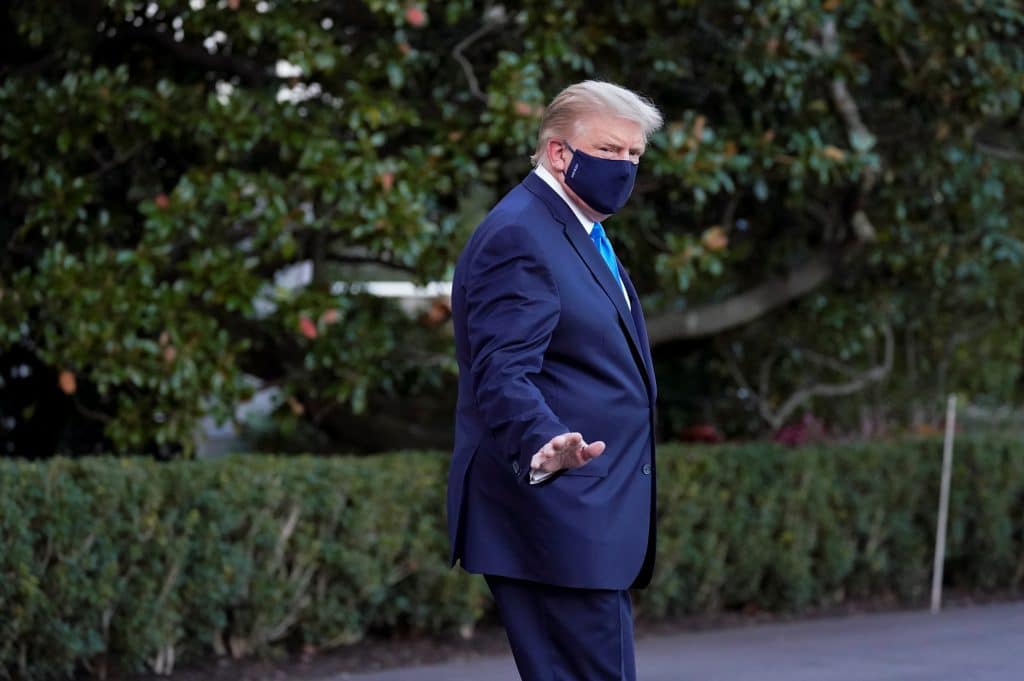
Later on Friday, Republican Sen. Mike Lee of Utah, a member of the Senate Judiciary Committee, announced that he also tested positive for coronavirus and will “remain isolated for the next 10 days.”
If Lee can’t vote on Barrett’s nomination, the judge could still squeak through with a tie-breaking vote by Pence, but the Republicans can’t afford to lose a single additional vote.
That’s why alarm bells have been sounding since Friday night when Sen. Thom Tillis, R-N.C., another member of the judiciary committee, announced he too had tested positive.
The White House medical team is currently investigating whether Trump’s announcement of Barrett’s nomination was the source of the virus’s spread, as at least a half-dozen people who have now tested positive were at that event.
McConnell has since announced the full senate won’t reconvene this week as planned, and the majority leader is said to be weighing a number of contingency plans to deploy if the newly infected Senators can’t vote on Barrett’s confirmation.
At present, Sen. Graham plans to proceed with the Oct. 12. hearing to consider the nomination.
One option reportedly being discussed was holding the Judiciary Committee vote in the Senate chamber with the infected senators perched in the galleries overlooking the floor, far from their colleagues.
“To proceed at this juncture with a hearing to consider Judge Barrett’s nomination to the Supreme Court threatens the health and safety of all those who are called upon to do the work of this body,” Sen. Dianne Feinstein, D-Calif., said in a letter to Graham.
“Typically, after the nominee testifies, the pressure on the team guiding the nomination is off, but you have to remain vigilant until the vote on confirmation,” Bonjean said.
And if McConnell can’t hold a vote on Barrett’s nomination before Election Day, things are bound to get more complex.
McConnell could push ahead and hold a vote during the lame-duck session, the two-month period between Election Day and the new Congress taking over on Jan. 3, 2021, but he runs the risk of the balance of power subtly changing in his chamber before the vote takes place.
That’s because it’s possible for a new senator to be sworn in early if he is elected to finish out the term of a senator who has died or retired, as is happening this year in Arizona, where Republican Sen. Martha McSally is embroiled in a tight race with Democrat Mark Kelly.
The election is a special election to finish out the remainder of the late Sen. John McCain’s term, and Kelly has been consistently ahead in the polls. If he wins, he could be sworn in as soon as Arizona ratifies the election results, reducing the Republican’s margin.
A similar scenario could also play out in Georgia, where a special election is being held to finish out retired Sen. Johnny Isakson’s term.
Two Republicans, Kelly Loeffler and Doug Collins, are running against Democrat Raphael Warnock in that contest. Polls show the three candidates in a virtual dead heat. If Warnock were to pull off a decisive victory, he too could be sworn in early.
If no candidate receives more than 50% of the vote in the contest, the top two finishers will advance to a runoff election, to be held on Jan. 5, 2021.
Regardless of how McConnell tries to steer the confirmation process, he is sure to face unprecedented obstruction from Democrats.
According to reporter David Sirota, who disclosed its existence in The Daily Poster newsletter, there is a memo currently circulating among Democrats on Capitol Hill on how they can try to block the nomination from moving forward.
Entitled, “Safeguarding the Court,” the document calls on both Senate and House leaders to use “every tool” at their disposal to stop the Barrett nomination in its tracks.
And it warns, “mere capitulation to what Washington insiders see as the inevitable will be viewed by many as abandonment of the Democratic base and could undermine enthusiasm.”
Among its suggestions is that the House pass measures, such as articles of impeachment or War Powers resolutions, that would automatically be prioritized on the Senate schedule under existing rules.
In the Senate itself, the memo says Democratic senators should explore filing so-called “fast track” measures that could also take precedent on the Senate schedule and push off a court confirmation vote.
A number of these so-called fast-track statutes — Congressional Budget Act, the Congressional Review Act, the War Powers Act, and the Arms Export Control Act –give any Senator the right to move to proceed to a vehicle and force a roll-call vote and sometimes a period of debate.
For example, Sirota explained in his piece, any Senator could submit a concurrent resolution on the budget, and by precedent, if action has not yet been taken on a budget resolution for the coming fiscal year, then the resolution would be immediately placed on the calendar.
Once on the calendar, any Senator could move to proceed to the resolution, forcing a roll-call vote on the motion to proceed. Meanwhile, resolutions of disapproval under the Congressional Review Act could be petitioned out of committee with 30 signatures after 20 calendar days.
Another tactic at the Democrat’s disposal would be to invoke the quorum call requirement for any Senate business. That could keep Republican senators trapped in Washington and unable to campaign for re-election in tight races.
“Engaging in dilatory tactics would likely force Majority Leader McConnell to keep the entire Republican Conference in the vicinity of the Senate, in order to maintain a quorum and to win various votes,” the memo states.
“This might become increasingly untenable because up to a dozen sitting Republicans are defending their seats in close races and will want to return home to campaign — including to participate in debates and other events they will be loath to miss,” it continues.
“There are all kinds of scenarios people are talking about,” Bonjean conceded. “You just never know what can happen as the environment changes, like if this extends into the lame duck session.
“There are countless scenarios to paint here … and we’re just scratching the surface of October,” he said.

















